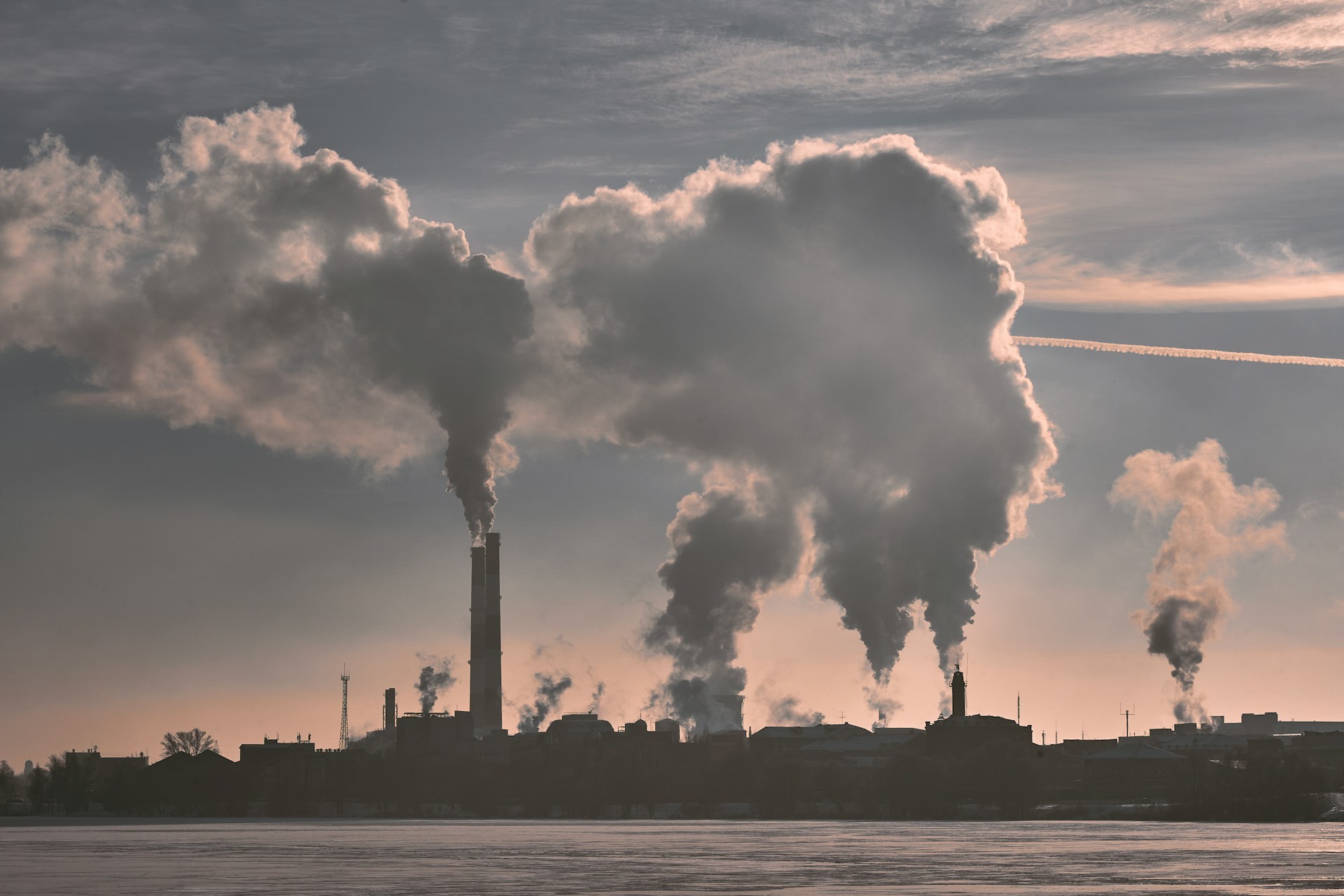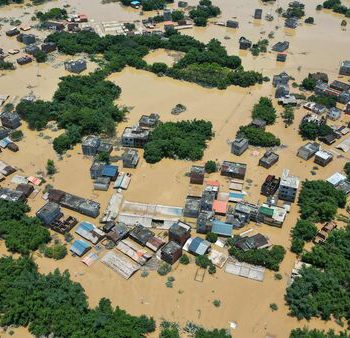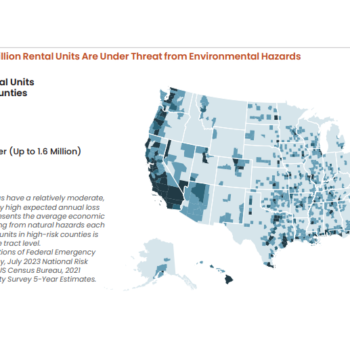|
|
In a landmark move aimed at safeguarding public health and combating environmental degradation, the Environmental Protection Agency (EPA) has introduced stringent new air quality guidelines. These guidelines, heralded as a significant step forward in environmental policy, address a range of pollutants that threaten air quality and human well-being.
The EPA’s new guidelines come at a critical juncture as concerns over air pollution and its adverse effects on health continue to mount globally.
The United Nations Environment Programme called air pollution the most significant environmental danger to public health, shockingly leading to around 7 million deaths yearly.
The organization added that in 2019, 99% of the world’s population lived in areas that didn’t meet the World Health Organization’s (WHO) strictest guidelines for clean air. This shows how widespread the problem of air pollution is.
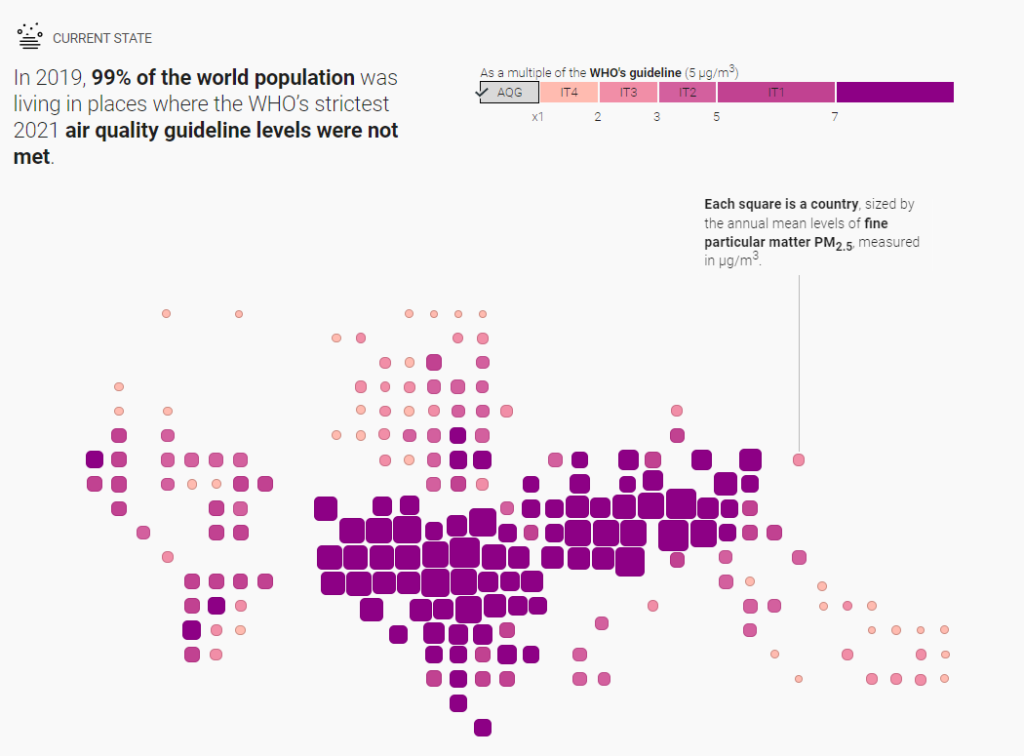
The tiny particles that pollute the air mainly come from human actions. Burning fossil fuels to make electricity, vehicles on the move, burning waste, and working in agriculture, chemicals, and mining all contribute. Agriculture also pumps out methane and ammonia, while chemical and mining operations add their share of pollutants.
Nature also plays a role. Volcanic eruptions, ocean spray, dust from the soil, and lightning strikes can all send particles into the air.
In developing countries, the situation inside homes can be just as concerning. Many rely on wood, coal, and other solid fuels for cooking, heating, and lighting. Kerosene lamps are also common. These practices release harmful pollutants right where families live and breathe, adding a dangerous layer to the global issue of air pollution.
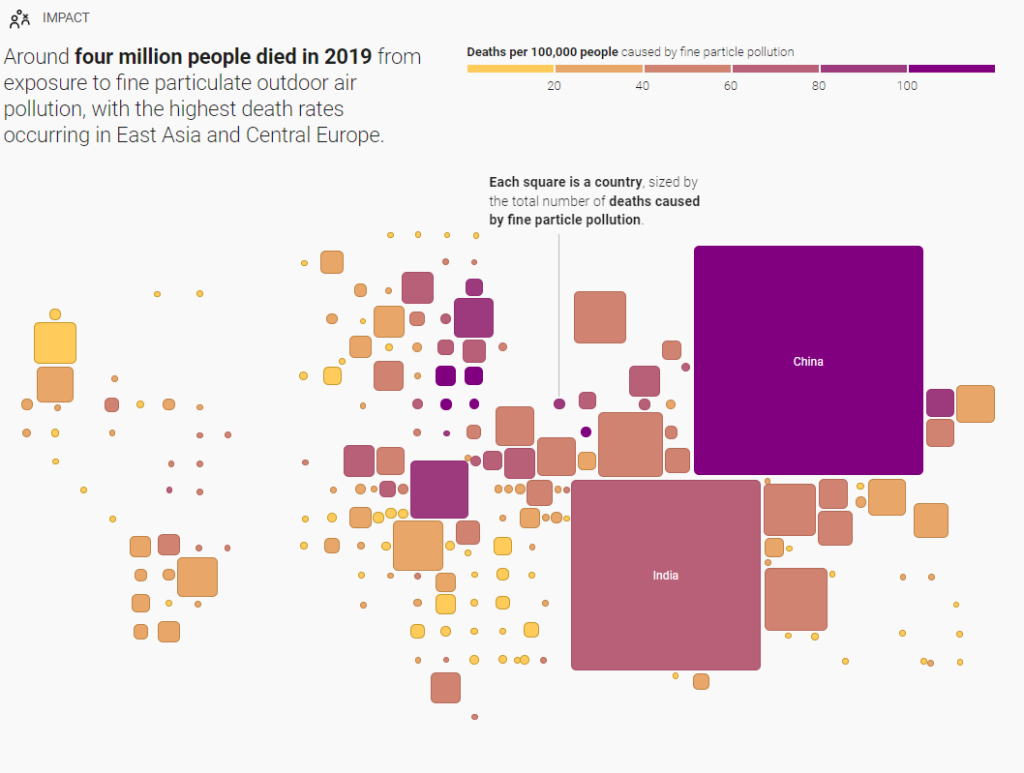
The European Environment Agency (EEA) has pointed out some serious health risks linked to air pollution. The effects can be devastating whether a person is exposed for a short period or over the long term. Strokes, chronic obstructive pulmonary disease, trachea, bronchus, lung cancers, worsened asthma, and lower respiratory infections are all conditions tied to polluted air.
Despite being a global issue, air pollution doesn’t impact everyone equally. People in developing countries are hit harder by air pollution. Children and teens are especially at risk. Because their bodies are still growing, including their organs and immune systems, they’re more vulnerable to the harmful impacts of dirty air. Exposure during these formative years doesn’t just affect immediate health—it can also lead to problems well into adulthood.
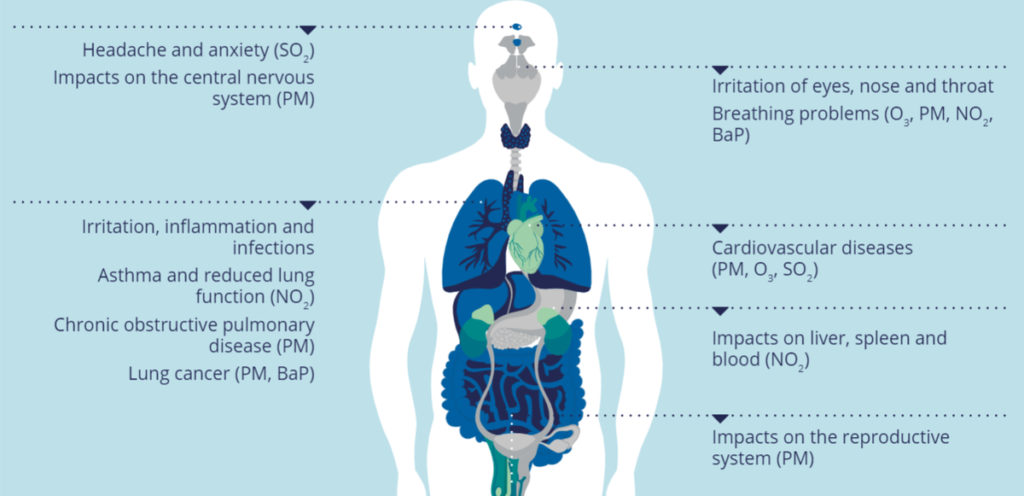
Image Source: https://www.eea.europa.eu/en/topics/in-depth/air-pollution/eow-it-affects-our-health
Air pollution doesn’t just harm humans; it wreaks havoc on the environment, too.
As reported by National Geographic, pollutants can contaminate bodies of water and soil, severely affecting plant life and reducing agricultural yields. Trees, crops, and other plants can die off or bear fewer fruits.
Compounds like sulfur dioxide and nitrogen oxide can form acid rain when they mix with water and oxygen in the air. This phenomenon damages plants, alters soil composition, degrades water quality, harms crops, and corrodes buildings and monuments.
Animals are not spared from the effects of air pollution either. They can experience birth defects, diseases, and decreased ability to reproduce – all due to exposure to polluted air.
EPA’s New Guidelines
With air quality deteriorating in many parts of the world due to industrial activities, vehicular emissions, and other anthropogenic factors, the need for decisive action to mitigate these issues has never been more urgent.
Under the updated guidelines, the EPA has set more stringent standards for key air pollutants such as particulate matter (PM2.5 and PM10), nitrogen dioxide (NO2), sulfur dioxide (SO2), ozone (O3), carbon monoxide (CO), and lead. These pollutants, known to cause respiratory illnesses, cardiovascular diseases, and other health problems, will now be subject to stricter limits, with the aim of reducing their concentrations in the atmosphere.
In a significant adjustment, the EPA has lowered the annual standard for particulate matter from 12 micrograms per cubic meter of air to 9 micrograms per cubic meter, demonstrating a commitment to addressing this pervasive pollutant. This reduction underscores the agency’s recognition of the serious health implications associated with particulate matter and its determination to mitigate its impact on communities across the nation.
However, the updated regulations won’t change the 24-hour standard. This particular rule is designed to handle sudden increases in air pollution. The threshold for these short-term spikes will stay put at 35 micrograms per cubic meter.
One of the primary objectives of the new guidelines is to align air quality standards with the latest scientific research on the health effects of air pollution. By incorporating up-to-date scientific evidence, the EPA aims to ensure that the guidelines reflect the most accurate understanding of the risks posed by various pollutants, thus providing better protection for public health.
The agency reports that adopting stricter air quality standards could lead to major health benefits. These include preventing as many as 4,500 early deaths and saving 290,000 workdays that would otherwise be lost due to air pollution-related illnesses, yielding up to $46 billion in net health benefits in 2032.
In addition to revising standards for existing pollutants, the EPA has also introduced guidelines for emerging pollutants that have become increasingly prevalent in recent years. These include pollutants associated with industrial processes, agricultural activities, and urban development, which have been identified as potential threats to air quality and human health.
Moreover, the EPA’s guidelines emphasize the importance of comprehensive monitoring and data collection to track air quality trends accurately. By expanding monitoring networks and leveraging advanced technologies such as satellite imagery and sensor networks, the EPA aims to enhance its ability to assess air quality at both local and regional levels, thereby facilitating targeted interventions to address pollution hotspots.
A Step Forward
The introduction of the new guidelines has been met with widespread acclaim from environmental advocates, public health experts, and concerned citizens alike. Many see it as a long-overdue response to the growing environmental challenges facing communities across the country.
Abigail Dillen, the president of Earthjustice, marked the significant moment, stating, “Today is a really big day.” She emphasized the extensive and solid evidence linking pollution to severe health issues.
Dillen pointed out the grim reality that pollution prematurely ends lives and causes asthma and other illnesses in both children and adults. She hailed this development as a major advance in tackling one of the deadliest environmental injustices facing the nation.
However, some major public health groups and individuals are not satisfied, emphasizing the importance of changing the 24-hour standard.
Harold Wimmer, the President and CEO of the American Lung Association, acknowledged the Environmental Protection Agency’s (EPA) new initiative as “a step forward for public health” but pointed out that it doesn’t entirely meet the expectations set by his organization and others in the health field.
Wimmer expressed appreciation for the tougher annual standards on particle pollution, which are expected to reduce asthma attacks, heart attacks, strokes, and premature deaths. Yet, he also shared his disappointment that the EPA didn’t heed the advice from the Clean Air Scientific Advisory Committee and health experts to tighten the 24-hour standard. According to Wimmer, updating this standard would have offered more comprehensive protection for public health.
In an email exchange with Forbes, Jennifer Rushlow, Vermont School for the Environment’s dean and a law professor at Vermont Law & Graduate School, shared:
“The 24-hour standard is what is most protective of communities that live closest to polluting facilities. These communities are most likely to be low-income communities of color. These communities face a myriad of threats to their health, which are compounded by exposure to PM2.5.”
While the EPA’s new guidelines represent a significant milestone in the fight against air pollution, challenges remain in implementing and enforcing these standards effectively. Critics argue that regulatory rollbacks and budget cuts in recent years have weakened the EPA’s capacity to enforce environmental regulations adequately.
Furthermore, the transition to cleaner energy sources and sustainable transportation systems will be essential to achieving long-term improvements in air quality. Investments in renewable energy, electric vehicles, and public transportation infrastructure are seen as critical components of any comprehensive strategy to reduce air pollution and mitigate climate change.
Conclusion
The EPA’s unveiling of new air quality guidelines marks a crucial step forward in addressing the complex challenges posed by air pollution. By setting more stringent standards for key pollutants and prioritizing scientific evidence and data-driven approaches, the EPA is taking decisive action to protect public health and the environment.
However, sustained efforts and collaboration among government agencies, businesses, communities, and civil society will be essential to translate these guidelines into meaningful improvements in air quality and ensure a healthier, more sustainable future for all.
